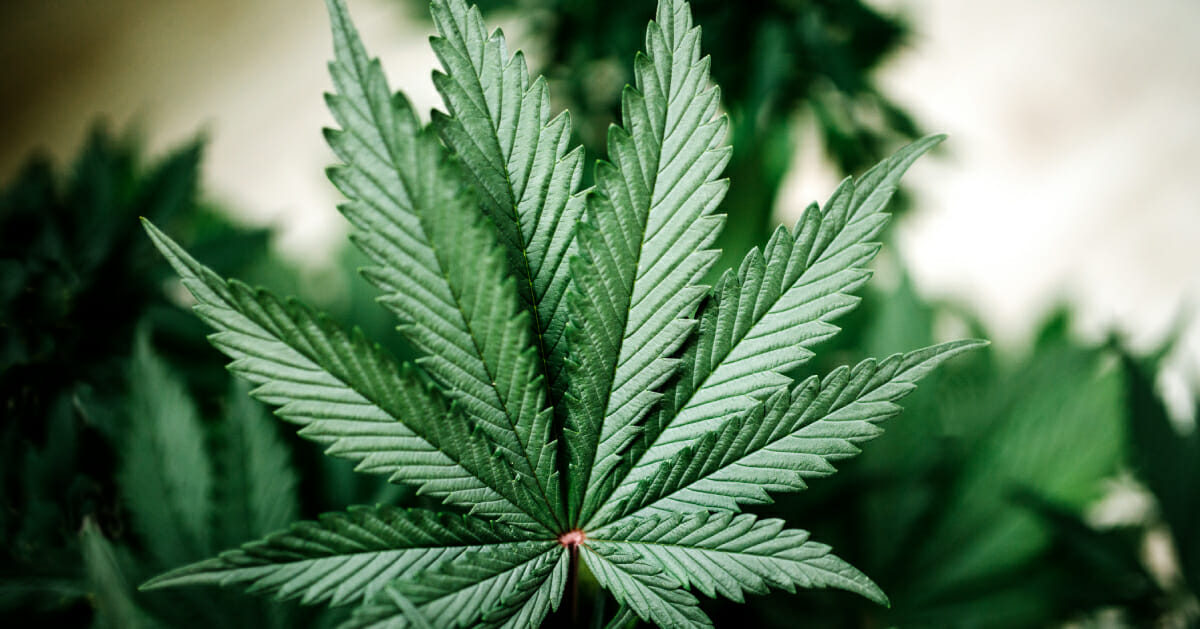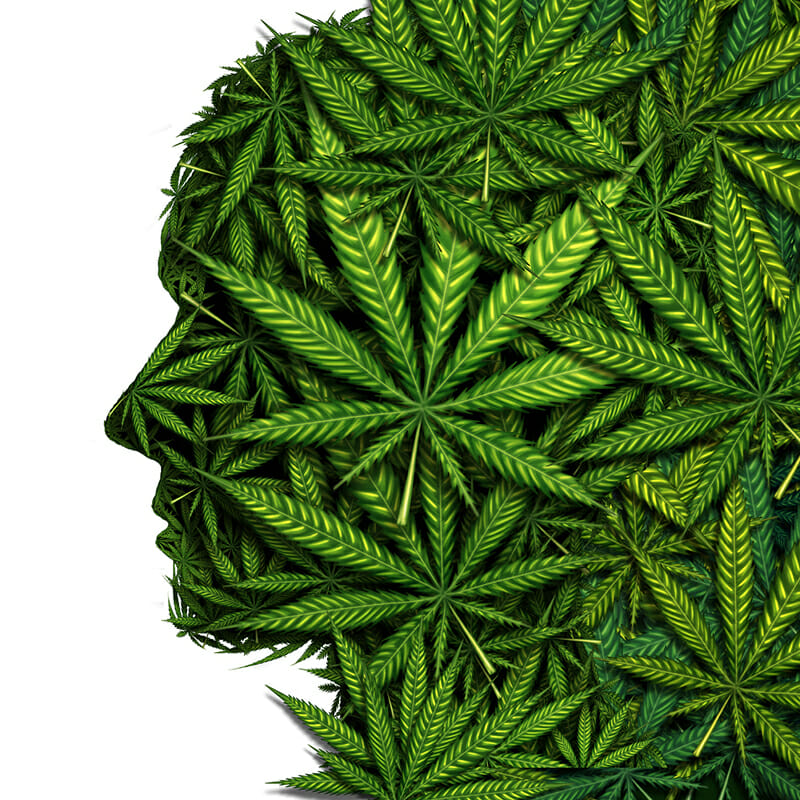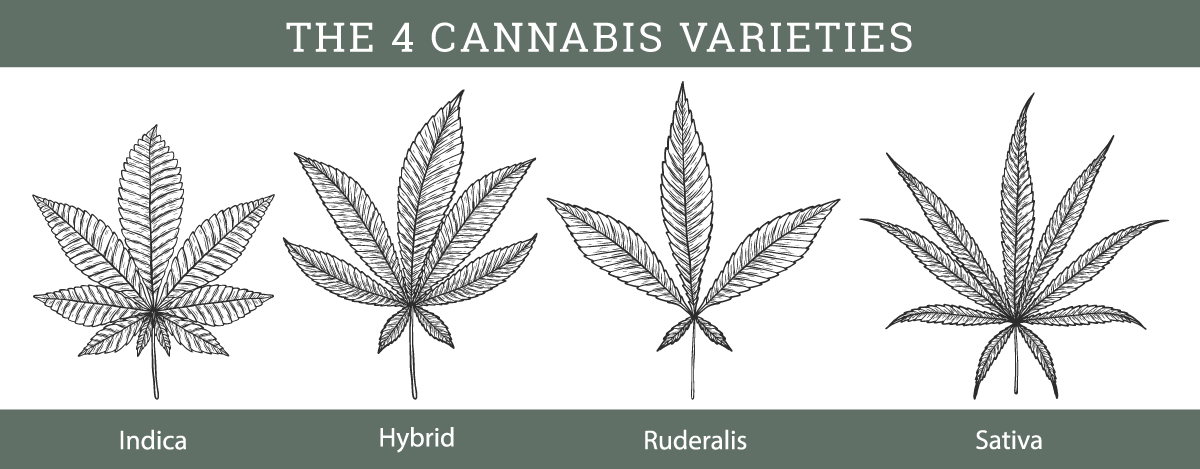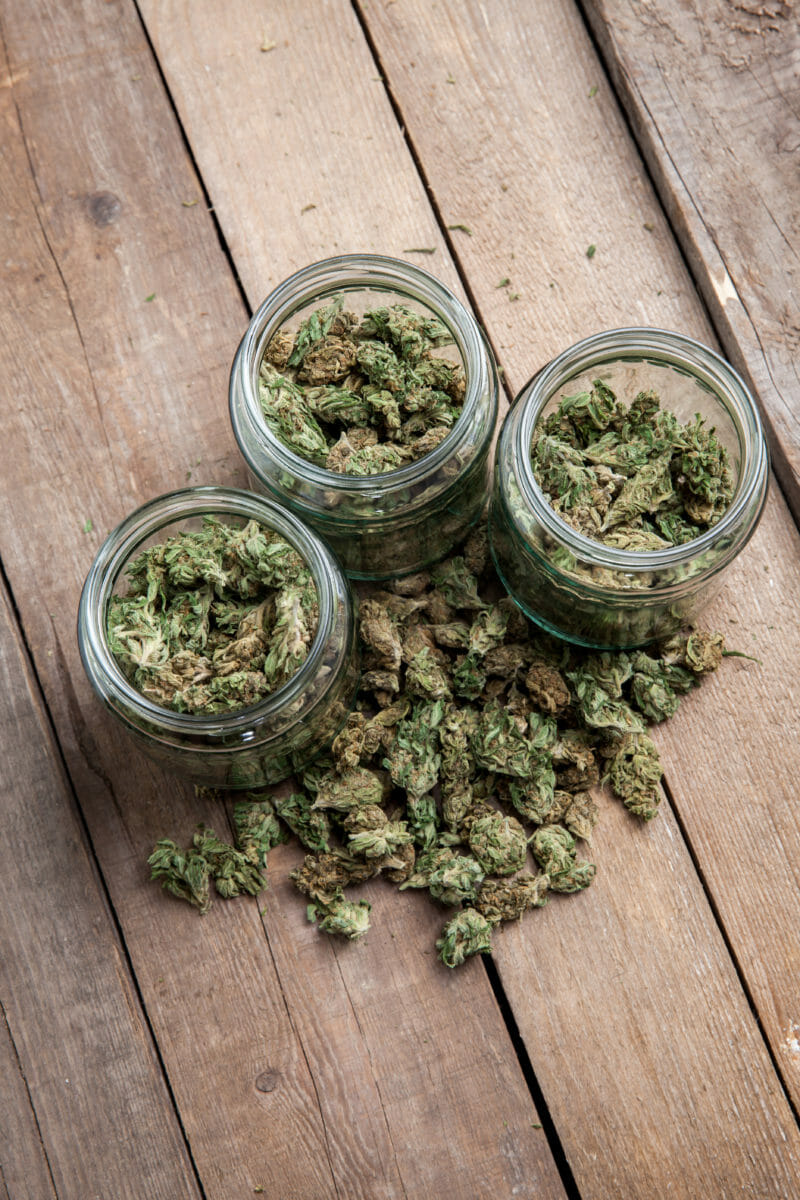Understanding the Difference Between Indica and Sativa Cannabis Strains
Written by Chris Weatherall on Mar 1, 2021
If you have visited a dispensary recently, you may have noticed that there are three main types of cannabis offerings: indica, sativa, and hybrid. Sativa and indica represent two distinct strains of cannabis, each of which features different morphological traits and results in distinct intended effects. Hybrid plants are created from a combination of these strains, allowing you to experience the benefits of both in a single product. Along with these three primary types of cannabis, a fourth lesser-known category known as ruderalis has recently become popular with growers who incorporate it into their hybrid varieties.
Understanding the difference between the strains is crucial to make a well-informed decision for which strain would be most helpful for you. Consider the information below to learn more about how cannabis influences the brain and body and how certain strains create different effects. Read our guide for tips on choosing the right strain, then visit Kind Meds for expert guidance from our budtenders and recommendations for specific strains that will most sufficiently meet your unique medical needs.
How Cannabis Influences the Brain and Body
Cannabis impacts the functioning of your brain and body by interacting with the endocannabinoid system (ECS), a biological system initially discovered in the late 1970s. The ECS not only allows cannabis to produce its desired effects, but it also helps maintain our health and well-being by regulating vital elements of our biology, including appetite, mood, memory, sleep, reproduction, and pain sensation. For us to survive, our cells must be equipped to perform their functions, and the conditions within our body must be kept in homeostasis, the narrow
range necessary to support proper functioning at the most optimal levels. The ECS plays a critical role in maintaining homeostasis and is found among all vertebrate species in the animal kingdom. This tightly regulated system controls various functions within your brain and body, from regulating the release of neurotransmitters to suppressing inflammation responses.

The ECS operates by influencing cannabinoid receptors and endocannabinoids. Cannabinoid receptors are located on the surface of cells. They receive ongoing feedback about the conditions outside the cell, then transmit this information to the rest of the body to activate the appropriate cellular response. The most studied and well-known cannabinoid receptors are CB1 and CB2. While both types are found in many areas of the body, CB1 receptors are some of the most abundant receptors in the brain. In contrast, CB2 receptors are typically found outside the nervous system in regions such as the immune system. Endocannabinoids are naturally occurring molecules that bind to these receptors and activate them.
How Composition of Cannabis Creates Different Effects

Every cannabis strain features a unique collection of molecules that work together to produce diverse effects. The plant’s genes regulate the expression of these molecules. The genotype forms the blueprint for growth, while the phenotype consists of the plant’s observable physical characteristics and is impacted by both the genotype and any variations in external conditions. Each strain’s chemical composition can be significantly impacted by how the plant is grown, harvested, and stored, resulting in different aromas and effects experienced in plants of the same strain. Lab analysis has determined that some major strains feature a consistent chemotype, or chemical fingerprint, which causes their distinctive effects.
Because so many factors are involved in creating cannabis’s distinct effects, strains can differ dramatically. Rather than pursuing strains labeled as the “best” or most popular, it is much more advantageous to understand the composition of a particular strain to determine the specific effects you can expect to experience. The cannabis plant is made up of hundreds of different compounds, but the compounds that most directly influence your experience are CBD, THC, and terpenes.
- THC is the psychoactive component of cannabis, or what provides the sensation of feeling “high.” It is effective in stimulating appetite, controlling nausea, relieving pain, and reducing the symptoms of insomnia.
- Cannabidiol, or CBD, is the compound within a cannabis plant that manages THC’s effects and helps modulate the experience of being high. CBD is the most prevalent cannabinoid in marijuana after THC and is known to reduce inflammation, control pain, and quell feelings of anxiety.
- Terpenes are the aromatic compounds produced by plants to attract pollinators. Over 120 different terpenes feature in cannabis strains, and the concentration and balance of a strain’s terpenes substantially influence the aroma, flavor, and effects. These terpenes work synergistically with CBD and THC to induce energizing and sedating effects, but the exact mechanisms are still being discovered. Some people simply like the bouquetthat a certain terpene produces, which may contribute to a sense of tranquility that helps guide the experience. Those interested in the aromatherapeutic effects of cannabis should be familiar with the main types of terpenes: myrcene, caryophyllene, limonene, and terpinolene.
When deciding on a strain, it’s best to understand if a strain is THC-dominant, CBD-dominant, or balanced. The exact effect a formulation has will depend on a person’s tolerance, chemical makeup (unique to your endocannabinoid system in the brain), and other factors. A dispensary professional may recommend a THC-dominant strain for someone seeking relief from chemotherapy treatments. By contrast, a CBD-dominant strain may be preferable for someone who suffers from social anxiety. A balanced or 1:1 strain will deliver the effects in equal measure and may be better suited for medical issues like insomnia or depression.
Primary Types of Cannabis Strains
While each strain of cannabis produces subtle effects on each individual, classification of cannabis into primary strain types can greatly help users determine what they can expect from consuming a particular strain. The original, native, naturally growing cannabis strains, referred to as landraces, evolved to most effectively thrive in their local microclimates. These landraces form the genetic framework for modern cannabis strains, resulting in different morphological characteristics and effects.

What Is Sativa?
The Plant:
Sativa plants are tall in stature with long, narrow leaves that tend to be light green and produce fluffy or wispy buds. When cultivated outdoors, they can reach heights of 20 feet, as this permits their branches to spread outward and grow up. They have longer flowering seasons than indica strains, taking 10 to 16 weeks of the flowering cycle to reach full maturity. This allows these strains to produce a much higher yield compared to indica strains. Sativa strains originated in or near the equator, including Columbia, Mexico, Southeast Asia, and Thailand. Today, they still grow naturally in warm, humid, tropical areas around the world. Common terpenes in sativa strains include pine, citrus, and tropical flavor profiles.
The Effects:
In contrast with indica strains, sativa strains typically contain higher THC levels and lower levels of CBD, resulting in mind-based effects and a more “cerebral high.” Consumers note that these strains cause energetic, uplifting, motivating, and euphoric effects, resulting in deeper conversations and enhanced creativity. Sativa strains are best for daytime use and social interactions and are often used by patients struggling with mood disorders such as depression and bipolar disorder.
What Is Indica?
The Plant:
Indica plants have a short, bushy body measuring 23-70 inches. These plants feature thick, broad leaves that tend to be dark green and produce shorter, denser buds that can develop purple or red hues. Because of their smaller stature, indica strains are ideal for indoor cultivation. They typically produce a lower yield than sativa strains, but this is offset by a comparatively shorter growing cycle that allows for more frequent harvesting, generally after 7-9 weeks of the flowering cycle. Indica strains are generally hardier, growing in a wider range of conditions. These strains originated within Central Asia and spread to India, Pakistan, Nepal, Turkey, Morocco, and Afghanistan. Common terpenes in indica strains produce flavor profiles ranging from rich earth and sweet musk to dark fruit, such as berry.
The Effects:
When compared to sativa strains, indica strains generally contain lower levels of THC and higher levels of CBD, resulting in more of a “body high.” Consumers describe experiencing calming, soothing, relaxing, and sedating effects from these strains, so they typically consume them in the evening to unwind or before going to sleep to clear thoughts, induce sleep, and promote sleep quality. Indica strains also provide pain relief, making them useful for several chronic pain conditions.
What Are Cannabis Hybrids?
Hybrids result from breeding indica and sativa strains together, also referred to as hybridization. Just as farmers worldwide seek to improve their crops through hybridization, cannabis growers throughout Canada and the west coast of the US have employed this technique in cannabis production since the mid-1960s. Breeding these two strain types allowed growers to combine the mold-resistant properties of sativa strains with the fast-flowering indica strains to develop a more viable crop.
The Plant:
When creating a hybrid, growers selectively inbreed multiple generations of the same hybrid, known as “back-crossing,” until they reach a strain that expresses a consistent phenotype. Technically speaking, every cannabis strain that exists today (excluding native landraces) is a hybrid, meaning the product of combining the genetics from both indica and sativa strains into one strain. Most strains labeled indica or sativa are hybrids featuring genetics from both types of strains. Breeding strains together allows cultivators to develop endless combinations of terpenes and cannabinoids to create a diverse array of strains, each with its own specific physical features and effects.
The Effects:
Hybrid strains merge the characteristics of their parent strains, providing the advantages of both indica and sativa strains at the same time. Depending on the specific strains used, the hybrid strain’s effects will be either sativa-dominant, indica-dominant, or an equal balance of both.
Sativa-dominant and indica-dominant strains primarily express the dominant plant parent’s effects with less influence from the secondary variety. At the same time, “true” hybrids produce an even mix of both. Investigating the lineage of a particular strain will inform you what effects that you can expect to experience. Hybrids work particularly well for beginners and medical marijuana patients who consume frequently and require balanced effects that do not interfere with their daily lives.

What Is Ruderalis?
Botanists initially believed cannabis ruderalis to be a wild breed of cannabis descended from indica genetics, allowing ruderalis strains to adjust to harsh climates that would otherwise prevent cannabis from growing and thriving. However, it is now accepted that this strain is, in fact, its own distinct species. Its name stems from the word ruderal, which in the plant world refers to species that grow even when the growing environment is inhabited by humans or is otherwise affected by natural disturbances in the environment. Ruderalis strains are native to Central and Eastern Europe, Asia, and particularly Russia.
The Plant:
Ruderalis strains tend to be short and stocky compared to sativa and indica strains, reaching a maximum height of between one and two and a half feet. This plant features rugged, shaggy growth patterns comprised of fewer side branches, wide, light green leaves, and small, chunky buds supported by thick, sturdy stems. Ruderalis seeds are extremely hardy—they detach easily from the plant and can continue surviving during cold conditions, remaining dormant until the climate changes to become favorable for growth. These plants can thrive in land disturbed by natural disasters and human activity, such as construction sites, roadsides, or unsown farmland.
In recent years, growers have incorporated ruderalis in hybridization because of its unique flowering cycle. Sativa and indica strains can only begin to produce flowers after exposure to at least 12 hours of dark daily, so growers must continue to adjust lighting settings to trigger the flowering phase. In contrast, ruderalis is “autoflowering,” meaning it transitions into the flowering phase within 21 and 30 days of planting, regardless of changes in the light cycle. Unlike other strains that require strict lighting and climate conditions, ruderalis can thrive anywhere, producing flowers during the entire year.

The Effects:
Strains of pure ruderalis tend to produce more CBD than THC, although many ruderalis hybrid autoflowering strains produce 20% THC levels. Growers like ruderalis hybrids because of their quick growth and rapid flowering and time to harvest. Ruderalis is ideal for medical marijuana patients who seek relief from anxiety symptoms and insomnia. When bred with other strains, ruderalis genes offer growers the ability to produce an autoflowering hybrid that offers the potency and flavor profile of the other strain while remaining hardier and more robust than its genetic partner.
Are There Evidence-Based Chemical Differences Between Sativa and Indica Strains?
 There are general differences in the growing conditions of Sativa and Indica, as well as reported different effects. Is there a chemical difference between the two plants that could help support these claims?
There are general differences in the growing conditions of Sativa and Indica, as well as reported different effects. Is there a chemical difference between the two plants that could help support these claims?
Since medical marijuana is still a relatively new phenomenon, its benefits have yet to be fully explored. However, two of the leading researchers of medical cannabis and psychopharmacology say that the differences between the two essentially end at their physical differences and growing conditions.
Ethan Russo, a neurologist who researches the psychopharmacological effects of cannabis, explains that how the plant affects people has nothing to do with the look of the plant – whether the leaves are wide or narrow – the effects are the same.
Jeffrey Raber, a chemist by training who studies commercial cannabis, agrees, saying that there’s no research to suggest such sweeping recommendations. He bluntly states that it should stop immediately.
In essence, the question, “Sativa or Indica?” does not matter. The Sativa and Indica differences extend to physical appearance and growing conditions, but, according to research, not beyond. For example, lab testing of Indica, Sativa, and hybrid strains found that on average (across all selected strains), there is little difference in the ratios of CBD and THC across different plant types. As such, there must be a better method to determine which formulation will best work to meet the needs of a particular patient.
To better serve the needs of consumers looking to treat symptoms of medical conditions, dispensaries would be better served to educate on the chemical makeup of different plants and how those ratios may better provide symptomatic relief.
General Guidelines for Choosing the Best Cannabis Strain
 The professionals who work in medical marijuana dispensaries are highly experienced and knowledgeable, but you want some idea of what you are looking for before you decide to purchase. There are a few questions you can consider when deciding on the right product for you:
The professionals who work in medical marijuana dispensaries are highly experienced and knowledgeable, but you want some idea of what you are looking for before you decide to purchase. There are a few questions you can consider when deciding on the right product for you:
- Do you have experience with cannabis? If you’re trying medical marijuana for the first time, try a low-THC formulation and stick to a low dose.
- Are you generally susceptible to side effects from other medications? If so, or if you are prone to anxiety, starting with a high CBD strain can help mitigate the risk of any possible side effects.
- How long do you want the effects to last? In general, inhalation methods or using a tincture leads to shorter term effects. If you want a longer experience, try an edible.
This list is not exhaustive, and the exact effect that a strain of THC, CBD, and terpenes will vary in addition to your own chemical makeup. A professional can help you determine which products are right for you, based on your desired form of wellness and relief. At the same time, understand that each person’s experience is unique, and it may take some experimentation to find the perfect strain and amount.
For Arizona Medical Marijuana Patients
Kind Meds is a premiere Medical Marijuana Dispensary in Mesa, Arizona, with a wide selection of products containing strains of all types. We work with our patients to help them each understand their own unique needs and make recommendations for the right strains and products to meet these needs. Our staff carefully selects each product for our store from well vetted, certified partner brands and local farmers, ensuring your medicine is always the highest quality. If you are an Arizona Medical Marijuana cardholder and would like to fully experience the unique benefits medical marijuana has to offer, visit Kind Meds today to discover the right strain for you.
*Editor’s Note: This article was originally published Nov 19, 2019 and was updated March 1, 2021.









